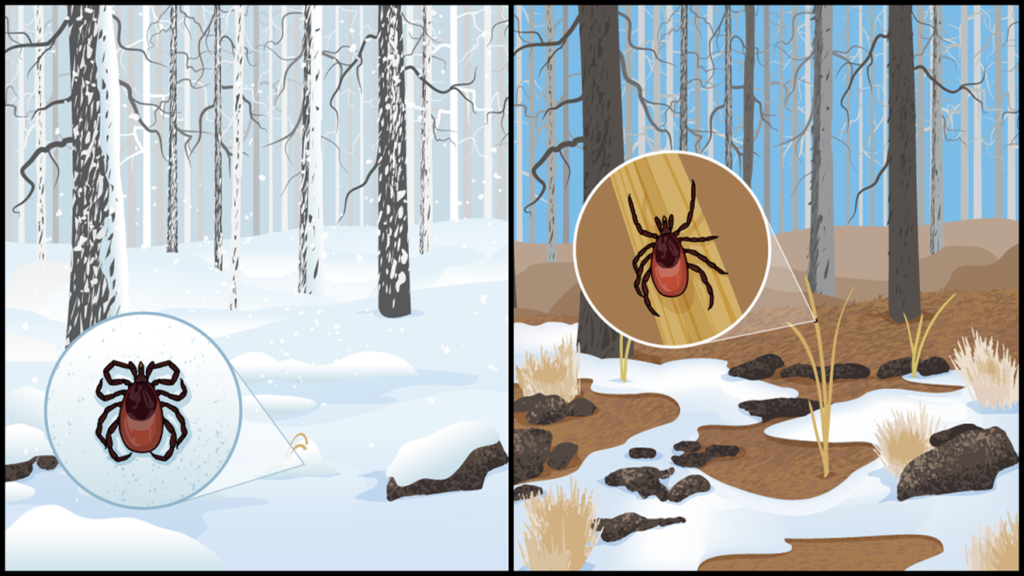
While we get a respite from mosquitoes in the winter, Ixodes scapularis keeps on ticking. Black-legged ticks that transmit Lyme disease can be active year-round. Unseasonably warm temperatures, or what may well be the new seasonal weather patterns, are quite suitable for ticks. If the thermometer reads above 45 degrees Fahrenheit they will be out and about busily looking for a bloodmeal. As long as it’s above freezing, they may latch on to any warm body that happens by. Don’t be surprised to find a tick on the dog or yourself after a walk in the woods.
Ticks burrow down into the leaf litter to seek harborage in unfrozen ground. Snow cover adds to the insulation. By decreasing the amount of water in their cells, ticks are able to resist freezing and adapt to the cold. A natural anti-freeze compound, a “cryoprotectant”, aids in survival. Bitter cold and dry conditions will kill ticks. But on those melty days when the sun is calling you out for a hike or you finally decide to finish raking the leaves, watch out! Think about ticks when you are rummaging through your wood pile or cleaning up around the yard. Suburban deer are nearly ubiquitous. If you have deer, you probably have ticks.
Pennsylvania is Number One in the United States for reported Lyme disease cases. The highest rate of disease transmission occurs in late spring and summer when the much smaller nymphs are abundant. Your winter encounter will most likely be an adult, much easier to see and remove. And remember, it takes at least 24 hours for the Lyme bacteria to be transmitted from the attached tick to you. As always, your best defense is a thorough tick check, for you and the dog.